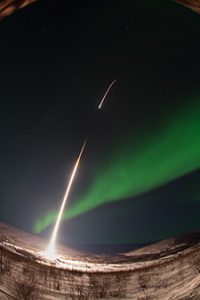The purpose of the GREECE (Ground-to-Rocket Electrodynamics-Electrons Correlative Experiment) is to significantly enhance our knowledge of the structure and dynamics of the electron precipitation responsible for the aurora, on both large and small scales, which can ultimately be used to set stronger constraints on models of auroral electrodynamics. This mission investigated the electrodynamics associated with the most dynamic, fluid-like auroral structures that occur at substorm onset using a sounding rocket. In addition to the rocket, the science closure depended on heavy use of supporting ground-based optical auroral imaging at downrange sites, under the payload trajectory. This new payload carried two new electron detectors, a new ion detector, electric field sensors, and magnetic field sensors. Multiple narrow field and all-sky imagers also viewed the auroral structures from a downrange site at Venetie. The Principal Investigator was Dr. Marilia Samara/South West Research Institute.
